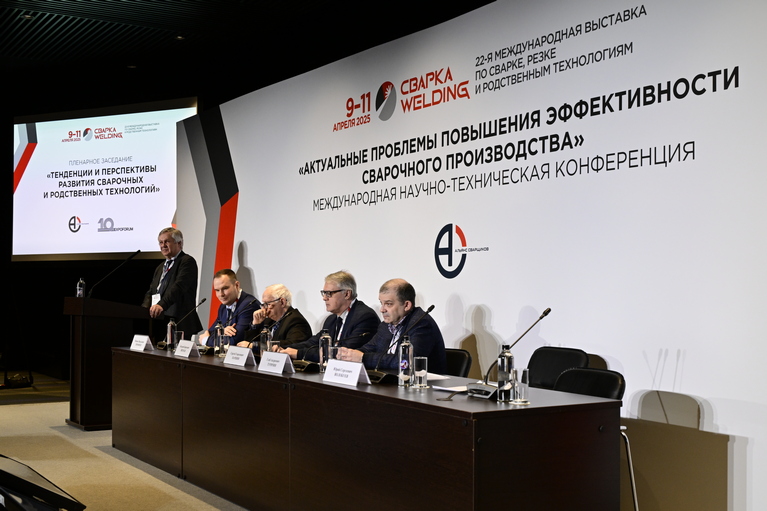Robotic welding. The rapid development of the industry is changing technologies and increasing human resources professionalism

The issues of welding production modernization were discussed by industry experts at the international scientific and technical conference «Actual Problems of Improving Welding Production Efficiency», held on April 9 as part of the 22nd International Welding Exhibition at the Expoforum Convention and Exhibition Center.
The participants were greeted by Mikhail Timofeev, Ph.D., Chief Welder of the Kurchatov Institute — Prometey Central Scientific Research Institute of Structural Materials, who moderated the event.
Natalia Rubtsova, director of the Alliance of Welders of St. Petersburg and the Northwest region, offered to honor the memory of the already departed colleagues who created a technological welding service in the country: Aleksander Ardashnikov, Vladimir Gorbach, Mikhail Karasev, Sergey Markov, and Aleksander Artemyev.
Viktor Gezha, Ph.D., Head of the sector of the Kurchatov Institute — Prometey Central Scientific Research Institute of Structural Materials, spoke about the improvement of the express method for determining the content of diffusive hydrogen in deposited metal. «Although there are many methods for determining the content of diffusely mobile hydrogen, which significantly affects welding technology, in fact, they all require complex, expensive equipment and highly qualified personnel. In addition, all existing methods allow us to determine the content of diffuse hydrogen only after quite a long time, at least the next day,» he explained the background of the task of developing a simpler technique that could be used in factories.
This task has been solved today: by combining several techniques, Viktor Gezha’s team has created a new advanced express technique that allows determining the content of diffusive hydrogen in the deposited metal within literally an hour or even 15 minutes. «The developed technique makes it possible to quickly obtain information about the content of diffuse hydrogen in the deposited metal and edit the welding technology. Currently, patents and regulatory documentation for the new methodology are being issued,» said Viktor Gezha.
However, any introduction of technology into production may come up against the lack of personnel, especially qualified ones. «For example, five years ago we did not have such a process as manual laser welding. What kind of worker can be assigned this job — manual laser welding? And now there is robotic welding. What kind of welder can set up robots and perform welding?» asked Aleksander Chuprak, Chairman of the Council for Professional Qualifications in the Field of Welding, Deputy Director General for Technical Regulation and Qualification Assessment of the SRO Association NAKS.
As Aleksander Chuprak noted, due to the large number of different types of welding and for the convenience of regulating the qualifications of welders by the National Qualifications System in the field of welding, it is planned to introduce a Classifier of professional activities by the end of the year, according to which professional standards will be updated.
The timeliness of such regulation is confirmed the increasingly rapid development of the industry. At the end of last year, specialists from the scientific and educational laboratory of St. Petersburg State Maritime Technical University prepared a hybrid laser-arc welding unit for operation at a shipbuilding enterprise for the first time in Russia. Such welding is characterized by the fact that the laser beam and the electric arc act simultaneously, complementing each other and increasing the productivity and quality of the structure. Thanks to the laser-arc installation, the welding speed is increased up to 6 times compared to arc welding.
«Hybrid welding was not introduced into Russian shipbuilding mainly due to the lack of this technology in the regulatory documentation and information about this method in the industry, in particular in the Russian Maritime Register of Shipping. Since January 1, 2025, these changes have been made to the regulatory documentation of the RMRS,» said Vyacheslav Osipov, Deputy Director of the Institute of Laser and Welding Technologies at St. Petersburg State Maritime Technical University (ILIST SMTU), adding that since January the complex has been operating at the Onega Shipbuilding and Ship Repair Plant. It is also important that the installation was created using domestic technology and components manufactured in Russia and friendly countries.
Concluding the conference, Mikhail Timofeev wished good luck to all domestic manufacturers and industry representatives.